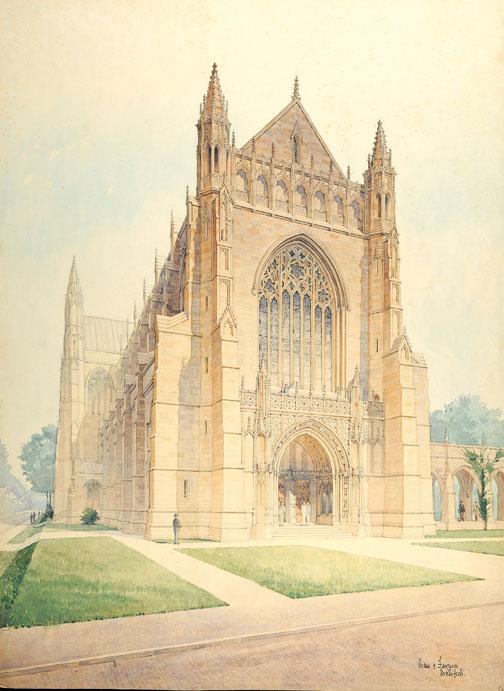

When Princeton was building its reputation as a modern school of international stature around the turn of the 20th century, its trustees and administrators looked back — at the traditions and architecture of Oxford and Cambridge — to look forward. Key to sending the message to its students that they were part of an academic elite, they believed, was the creation of buildings in the collegiate gothic style.
The exhibition “Princeton and the Gothic Revival: 1870–1930” at the Princeton University Art Museum explores the development of Gothic revival architecture on campus, the changing nature of the understanding of the term “Gothic,” and how the American Gothic revival movement was tied to Princeton’s understanding of itself as the “modern inheritor” of the architectural and pedagogical tradition of Oxford and Cambridge, said curator Johanna Seasonwein.
Most of the 40 objects in the exhibition, on view Feb. 25 through June 24, come from the art museum, Firestone Library, and the University archives, including watercolors and drawings of the Chapel, Holder and Hamilton halls, and the now-gone Marquand Chapel and a biological-sciences laboratory. The exhibit also includes models of stained-glass windows that were in Marquand Chapel and an early watercolor design for the large stained-glass window in Procter Hall.
At the same time the University was erecting buildings in the collegiate gothic style, which revived medieval architecture, the new art museum and Department of Art and Archaeology were beginning to collect art objects from the medieval period. Included in the exhibition are several of these early objects, including an English alabaster relief and two sculptures of the Virgin Mary and Christ child.
Accompanying the exhibition in the art museum will be an illustrated catalog (distributed by Princeton University Press) and a mobile tour accessible by smartphones. The tour will take visitors to nine campus sites. At some of those spots people can listen to audio narratives — for example, Dean of Religious Life Alison Boden talks about her connection to the Chapel, and Rockefeller College master Jeff Nunokawa observes how students interact with the architecture of Holder Hall.
